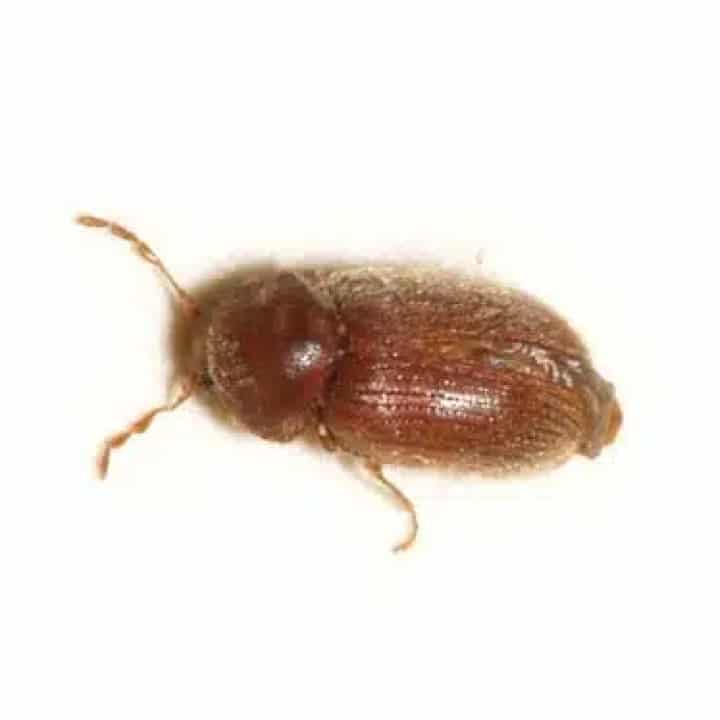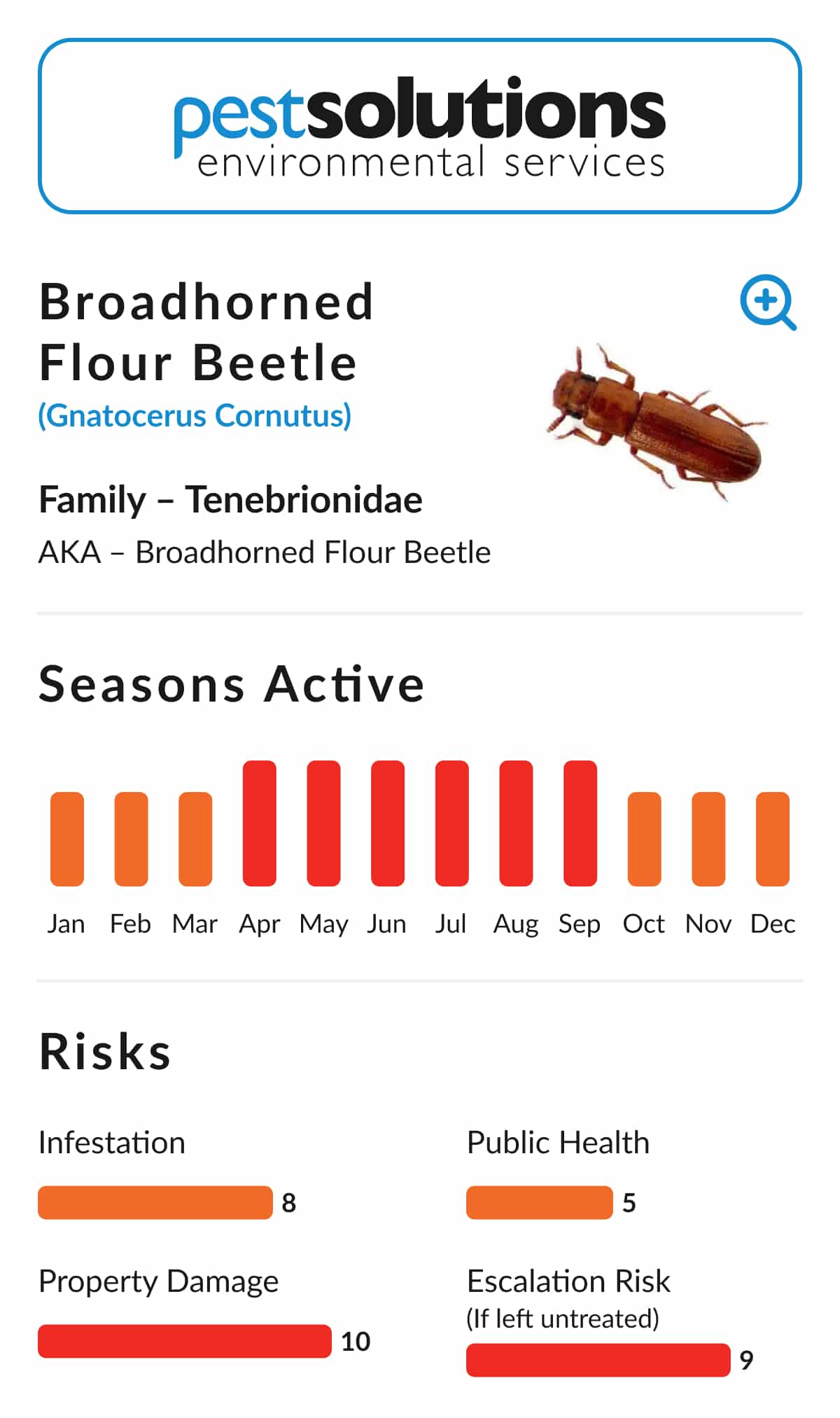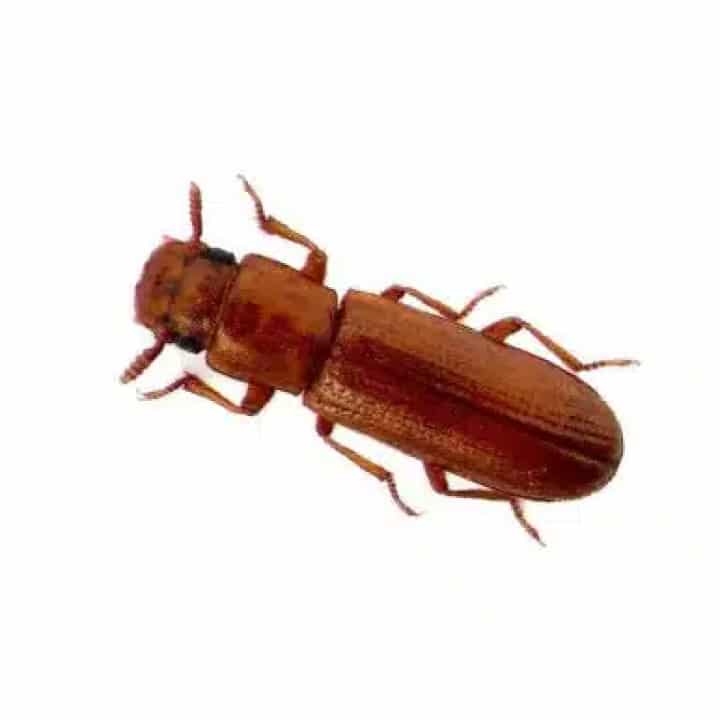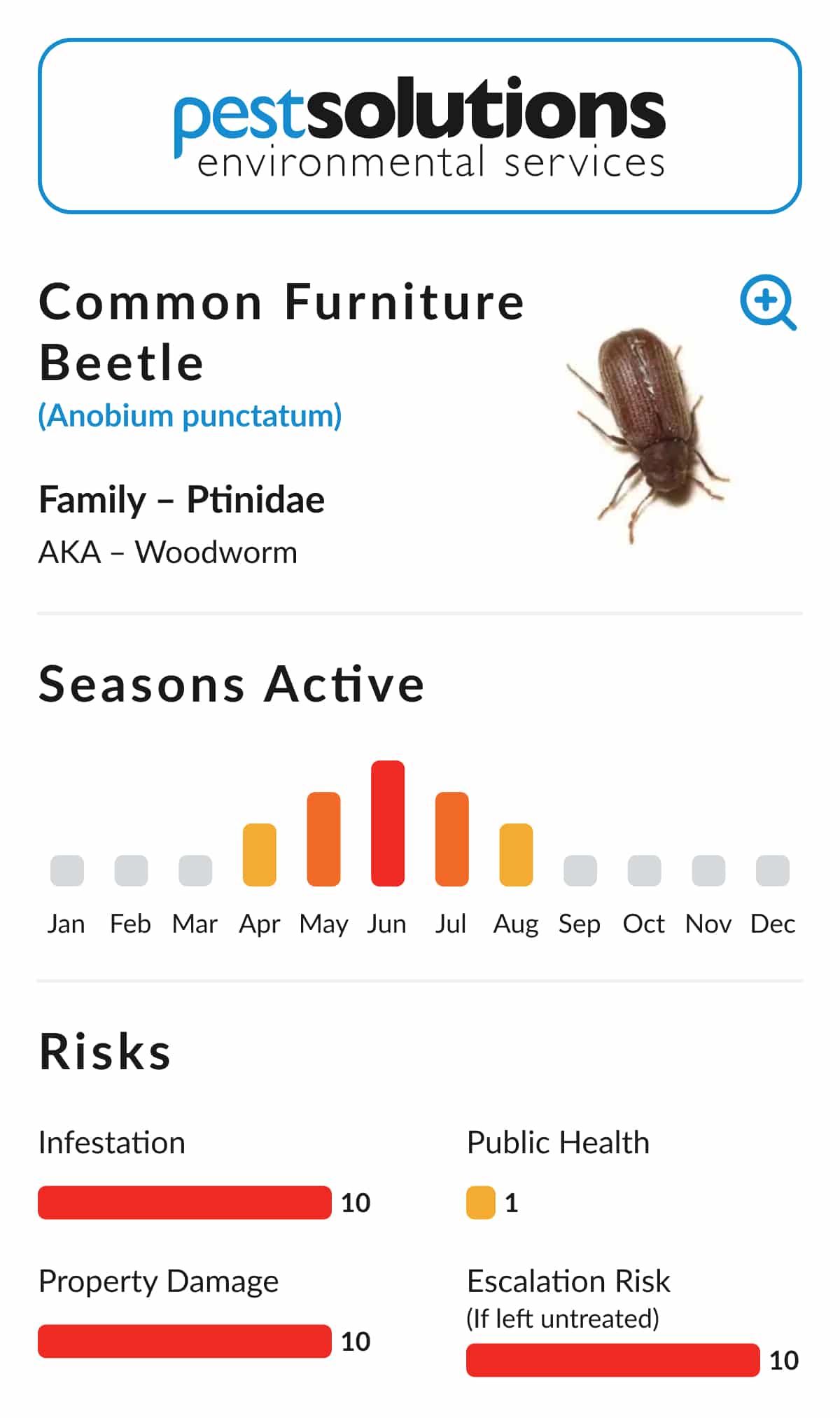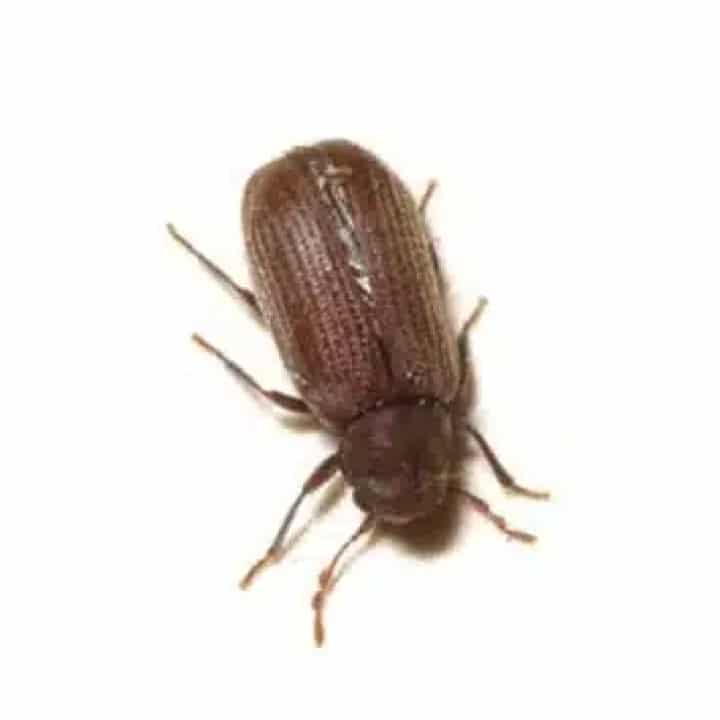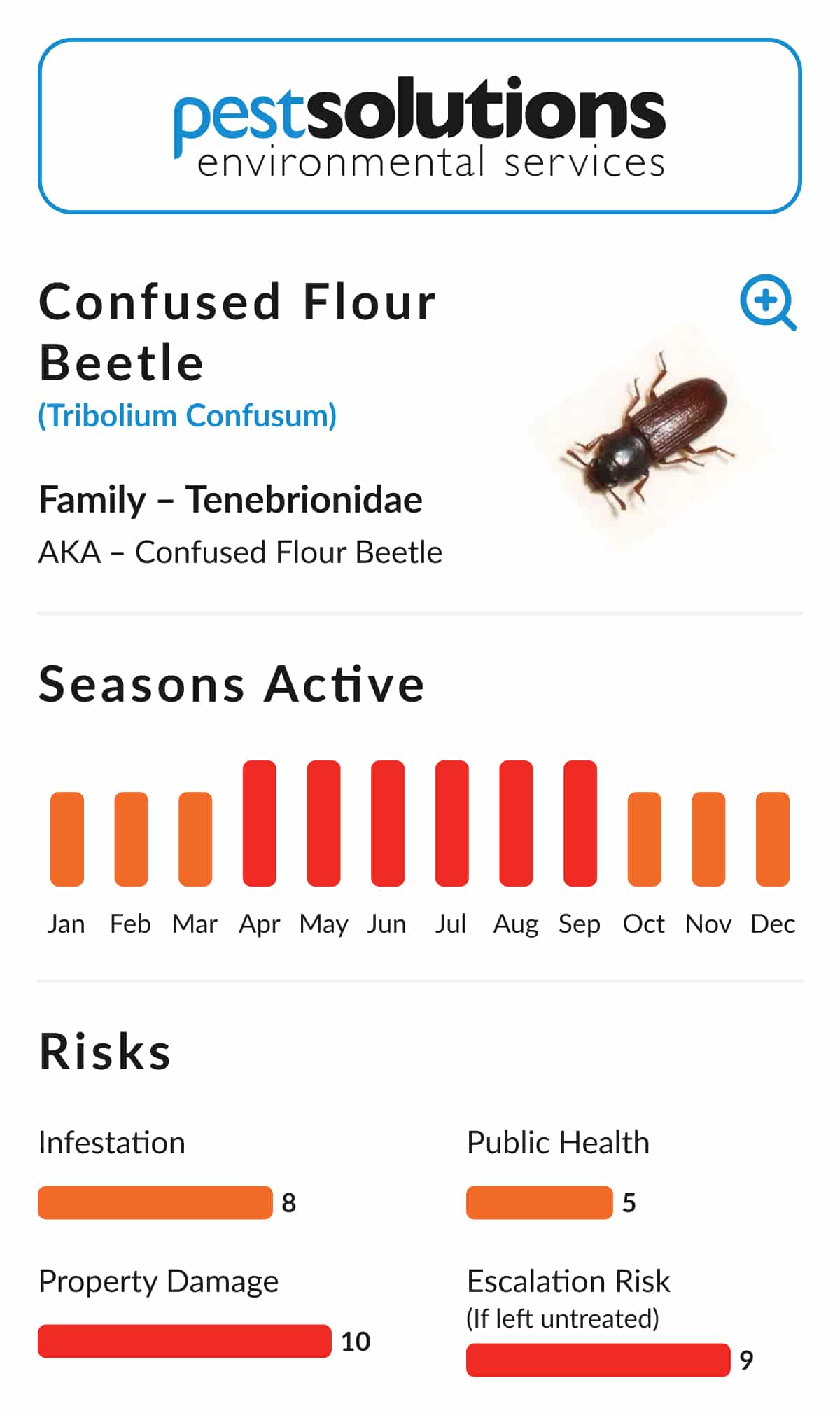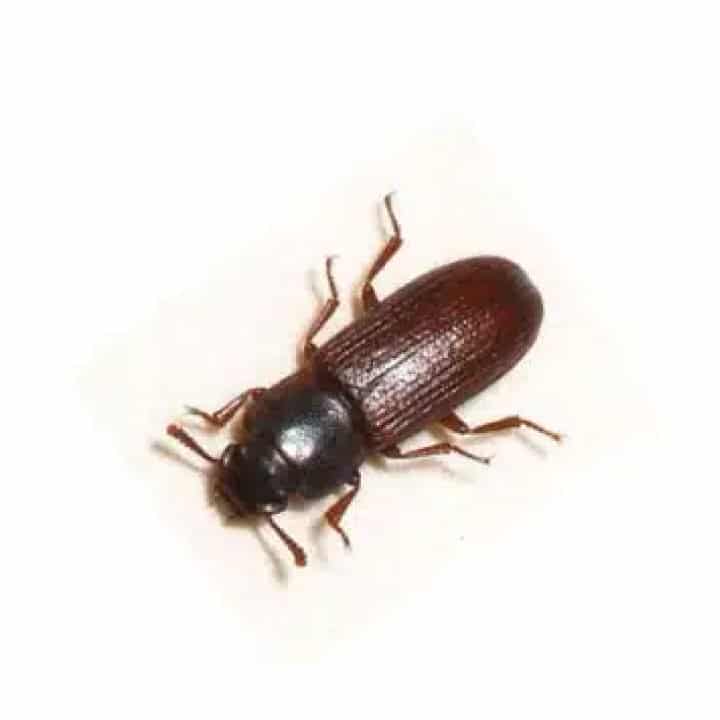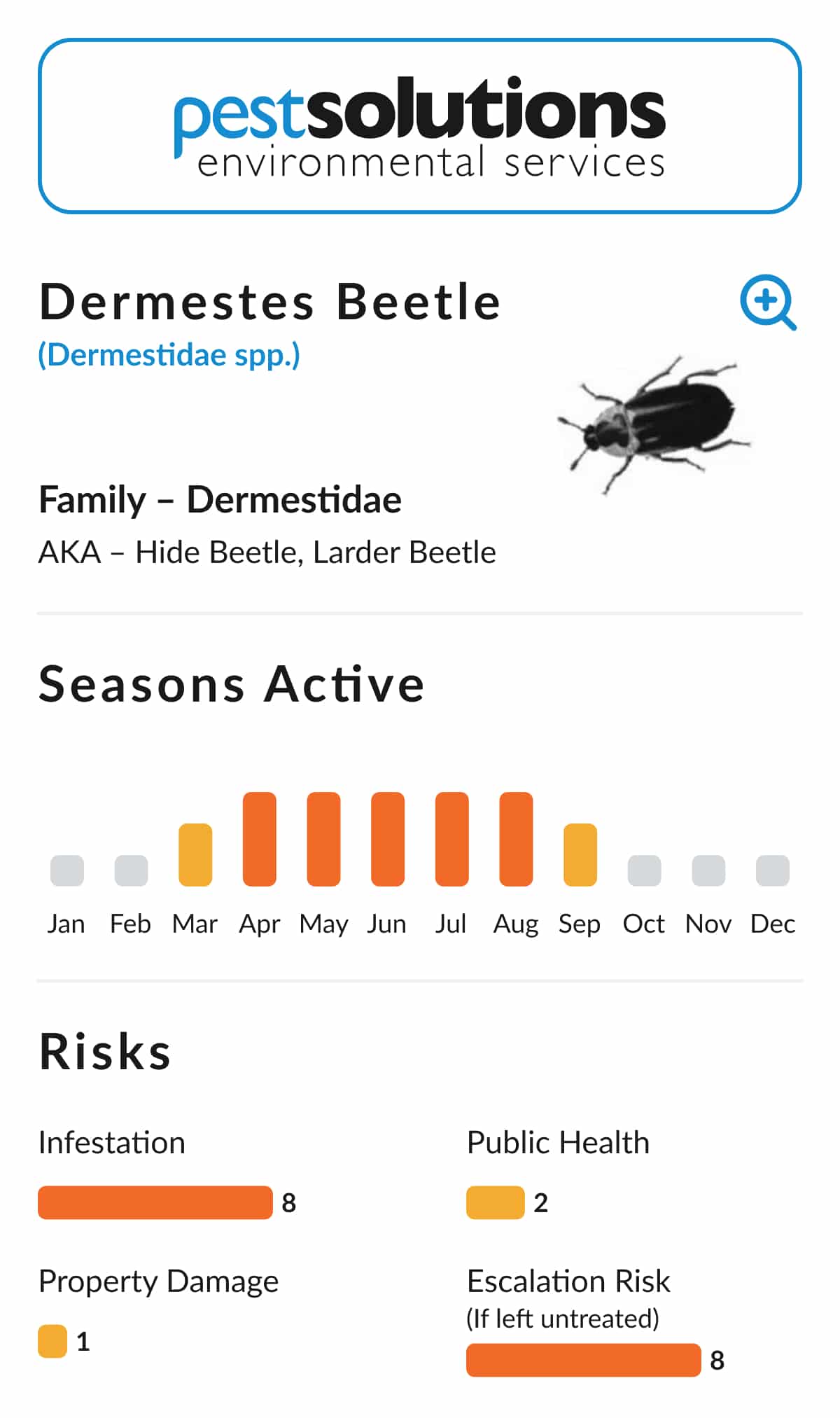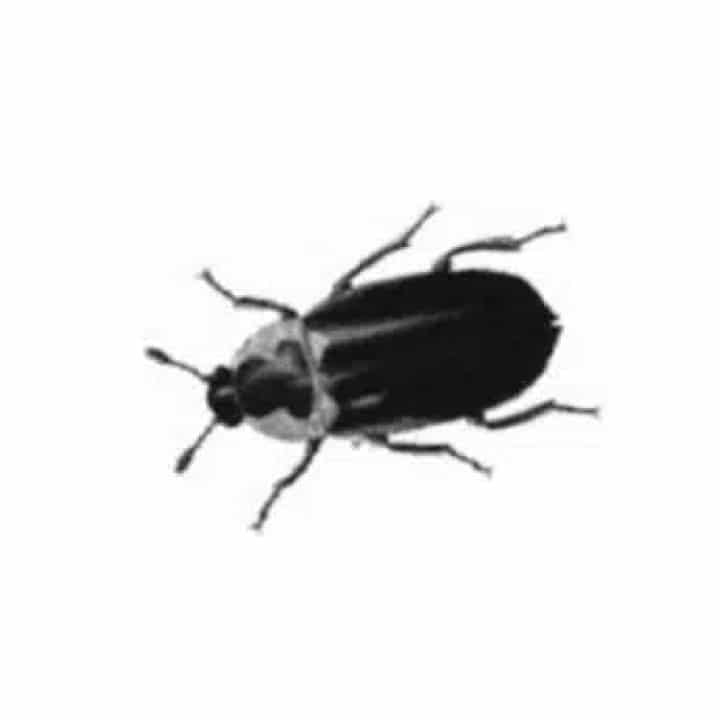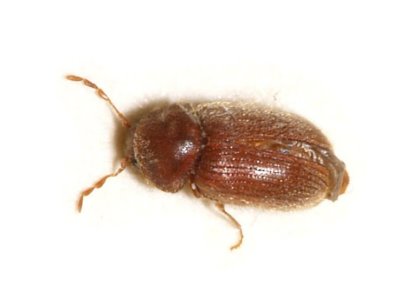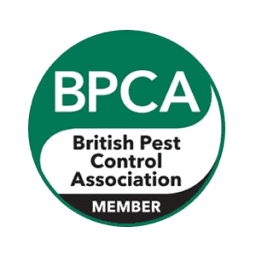
Key Facts About Biscuit Beetles
- Biscuit Beetles take their name from their tendency to infest and feed on dry, starchy foods such as biscuits, bread, cereals, and pasta.
They are especially common in pantries, food storage facilities, and retail environments where such goods are stored. - This pest is widespread throughout the UK and across the globe, thriving anywhere dry food products are present.
Biscuit Beetles can also be found in more surprising places, such as book bindings, dried flowers, and certain types of furniture, as their larvae can feed on non-food organic material as well. - Biscuit Beetle infestations can occur year-round, but they are most active and reproduce quickly in warm, humid conditions.
Under ideal circumstances, they can complete their entire life cycle in as little as 4-6 weeks, leading to rapid population growth. - Biscuit Beetles do not bite or transmit diseases to humans.
However, their presence can contaminate food products with shed skins, frass (insect droppings), and dead insects, making the food unsuitable for consumption and leading to costly waste. - Adult Biscuit Beetles are small (2–3.5 mm long), oval-shaped, and reddish-brown in colour, with distinctive grooved wing covers.
Their larvae are creamy-white and are responsible for the bulk of the damage, tunnelling through food products as they feed. - Infestations are often discovered by noticing damaged or hollowed-out food, fine powdery residues, or live adult beetles crawling near food storage areas.
Pinholes in packaging and the presence of larvae inside stored goods are also tell-tale signs. - Prevention and control rely on good food storage practices, regular cleaning, and prompt removal of infested items.
In some cases, professional pest control intervention may be required to eradicate persistent infestations and safeguard stored products.
If you suspect a Biscuit Beetle infestation in your home or business, early action is crucial. The expert technicians at Pest Solutions are highly experienced in treating even the most challenging stored product pest issues, helping you regain control and protect your property from further damage.
Call Pest Solutions today on 0800 027 2555 for a FREE survey, and let us help keep your property pest-free.

